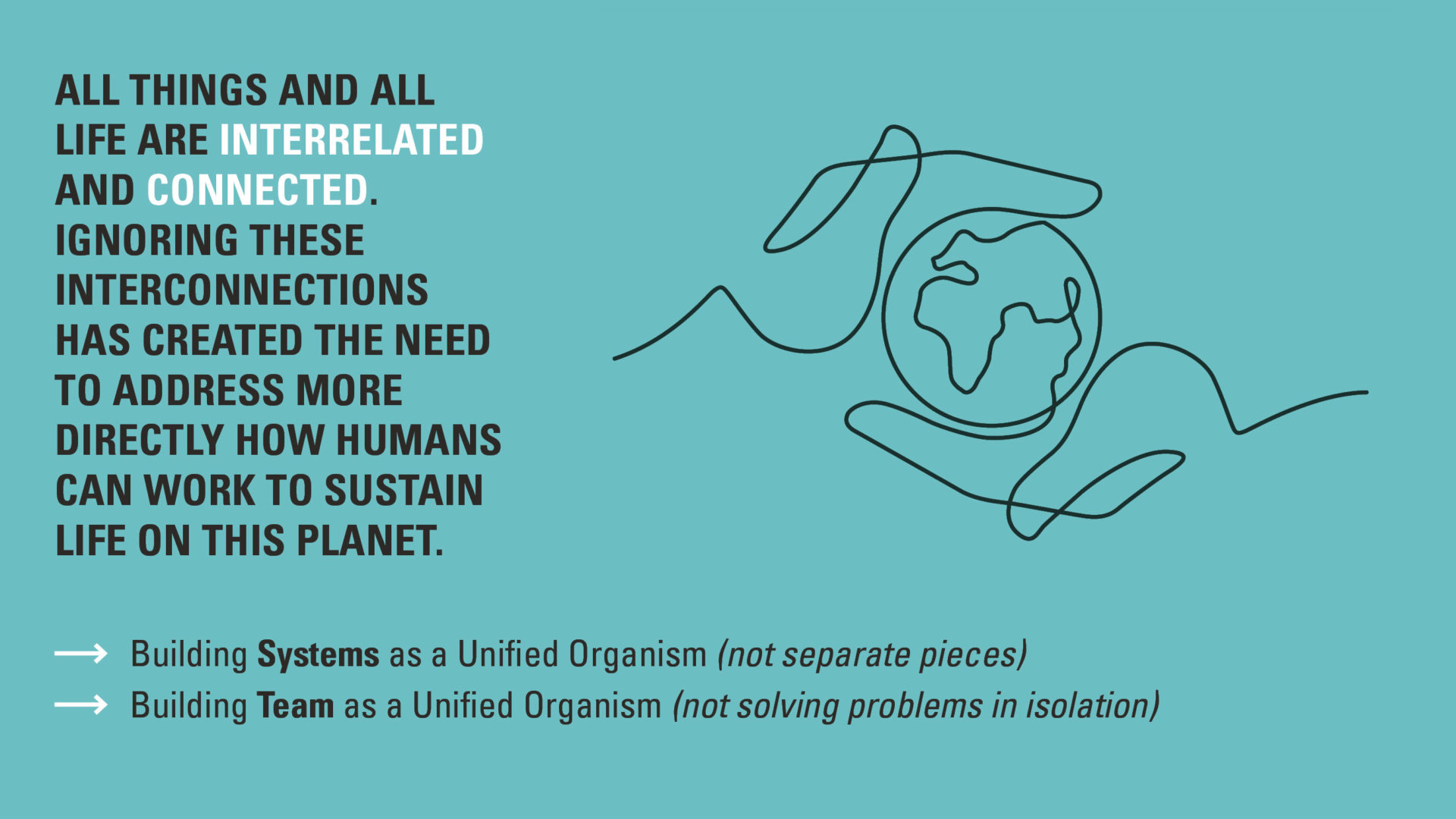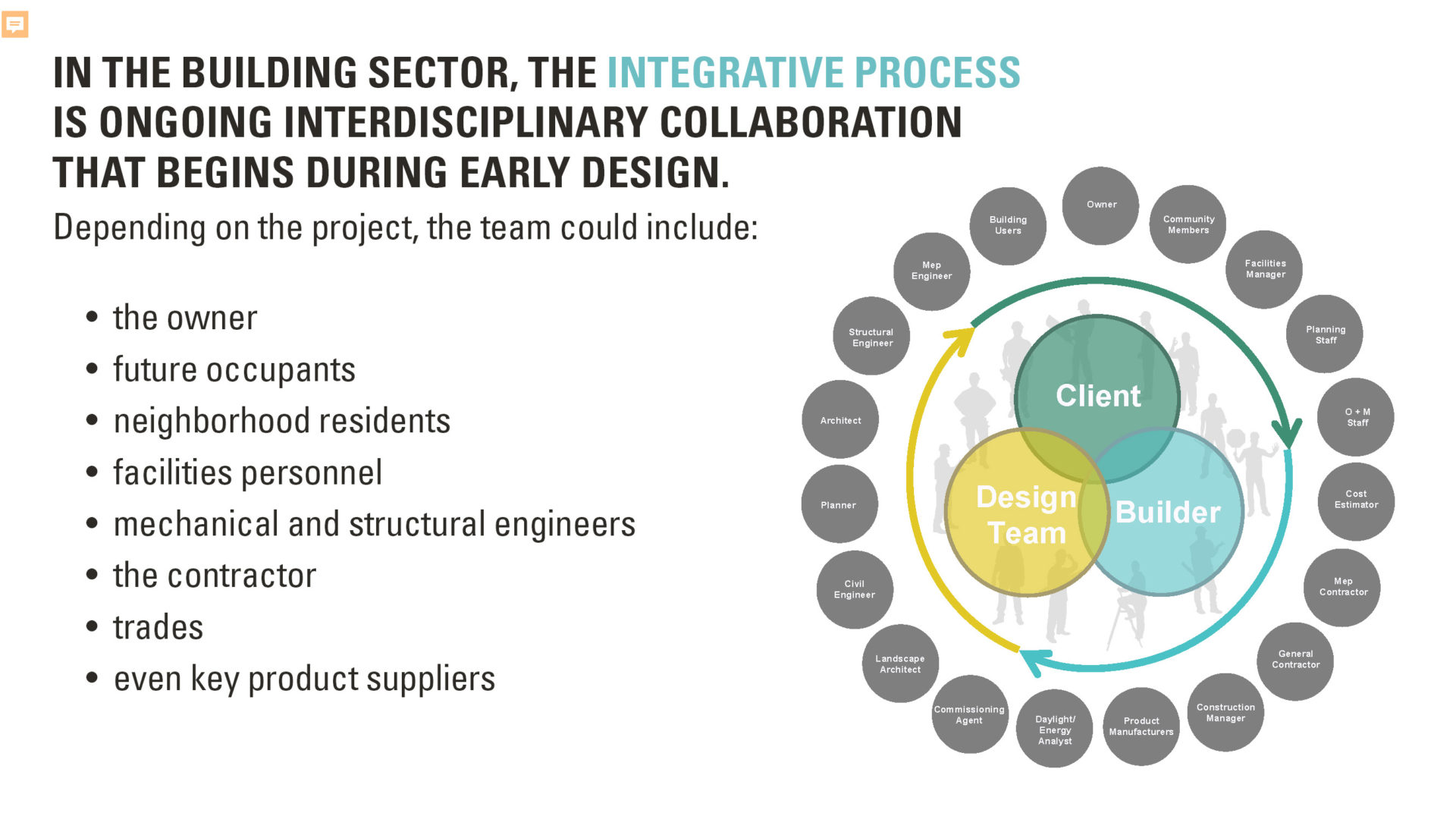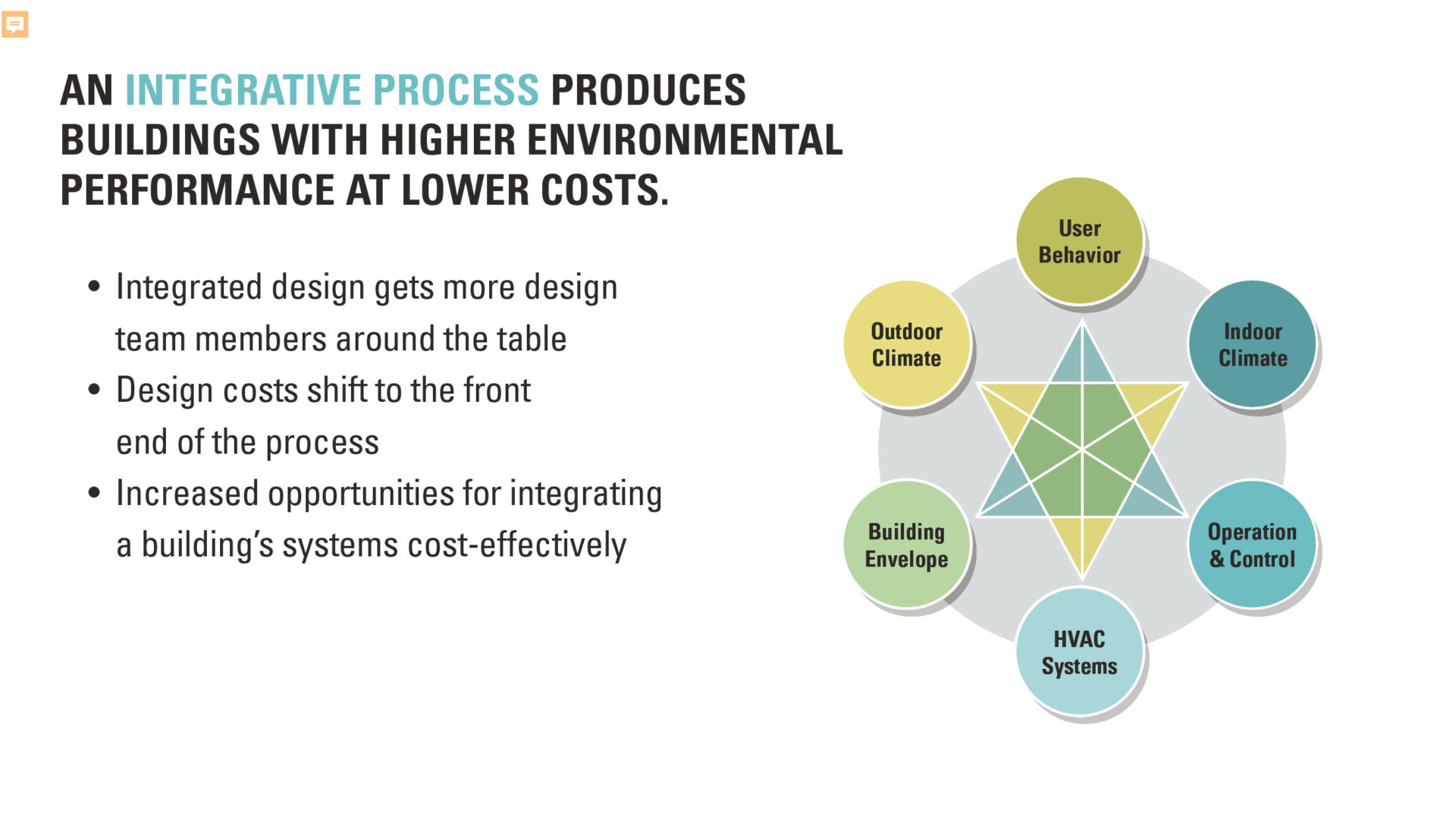According to the New Buildings Institute, the last seven years have seen a 75 percent increase in the number of buildings verified as zero-energy and a 93 percent increase in the number of buildings tracking toward zero-energy. These encouraging statistics offer hope as we face the ever-increasing impacts of global climate change. High-performance, zero-energy buildings are becoming much more accessible within today’s budgets and schedules. It’s not an “easy reach”, as a high level of interdependency of systems is required, but when Net Zero is the goal, there is a way to ensure your project has the best chance of success: the Integrative Process.
With the Integrated Process, the synthesis of expertise requires the team to develop all major issues in parallel with each other so that the entire design and construction team can identify cross-linked interrelationships, assess those potential outcomes, and effect the best overall result for the project.
Integrative Process, not to be confused with Integrated Project Delivery, provides a structured methodology that helps the project team realize the best combination of design details and technologies that elevate the overall performance of the project. This approach requires that the whole team – those who hold knowledge that is spread across various disciplines – be brought together in ways that enable the knowledge, analyses, and ideas from all disciplines to inform and weave together with the systems, components and considerations of all other disciplines that are part of the project. The typical design process involves one discipline developing their part, then handing it off to the next in line and ironing out the wrinkles down the road. With the Integrated Process, the synthesis of expertise requires the team to develop all major issues in parallel with each other so that the entire design and construction team can identify cross-linked interrelationships, assess those potential outcomes, and effect the best overall result for the project.

An integrative process mandates more coordination. It encourages rigorous questioning and challenges rules-of-thumb from the very beginning of the project. Assumed “best practices” should be tested. Relationships of systems should be analyzed. The coordination of building and site systems should be addressed early and questioned before schematic design starts, or at the least, while it proceeds. Integrating the many systems involved in a building project requires that the expertise of each team member responsible for each system, be brought together to augment the efficiency and effectiveness of every system and team member.

Putting Net Zero in reach typically requires reducing the building’s EUI by up to 75%* before attempting to let onsite generation do the rest. That means every building system plays a part in the equation. Siting orientation and envelope lead the way, as 80% of typical energy loss is through the envelope. From the passive reduction of heat gain to infiltration/exfiltration and insulation issues; from natural ventilation and lighting to plug load management, each component impacts the other and determines mechanical system sizing, so if each system is resolved in isolation, unintended consequences can derail the project’s chances of reaching the goal.

If your aim includes consideration of a Net Zero outcome for your project, you must embrace the Integrative Process as the pathway to elevating the performance of both the project team and the project itself.
*approx. 75% of the industry median EUI

